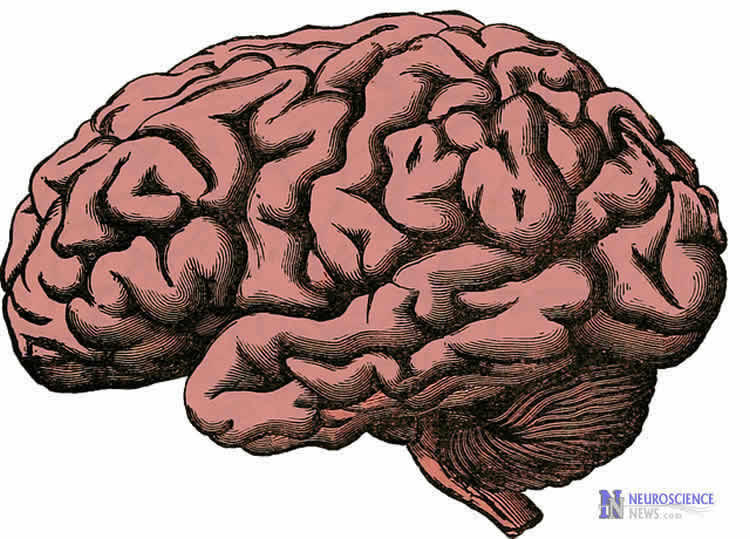Summary: A new study reports a single dose of ketamine given a week before a stressful even can act as a buffer against PTSD.
Source: Columbia University Medical Center.
Study in mice shows drug’s potential to prevent PTSD in soldiers and others likely to experience psychological trauma.
Columbia University Medical Center (CUMC) researchers have found that a single dose of ketamine, given one week before a stressful event, can buffer against a heightened fear response.
The study, conducted in mice, suggests that prophylactic administration of ketamine–a drug commonly used as general anesthetic or a rapid-acting antidepressant–might prevent post-traumatic stress disorder (PTSD) symptoms in soldiers and others who subsequently experience psychological trauma.
The study was published online in January in the journal Neuropsychopharmacology.
“Ketamine is a powerful drug, and we wouldn’t advocate widespread use for preventing or reducing PTSD symptoms. But if our results in mice translate to humans, giving a single dose of ketamine in a vaccine-like fashion could have great benefit for people who are highly likely to experience significant stressors, such as members of the military or aid workers going into conflict zones,” said study leader Christine A. Denny, PhD, assistant professor of clinical neurobiology in Psychiatry at CUMC.
There are few effective therapies for preventing or treating PTSD, an anxiety disorder that occurs in about one-quarter of individuals who experience psychological trauma. PTSD symptoms include re-living the trauma–experiencing repeated flashbacks, hyperarousal, and hyperreactivity–as well as mood changes, psychological numbing, and chronic physical symptoms such as headache. The likelihood that symptoms will develop depends on the nature and intensity of the trauma and an individual’s response.
Previous studies, in both humans and animals, have shown that giving ketamine before trauma can help reduce stress-related symptoms. However, it was not clear when the drug should be administered relative to a traumatic episode in order to maximize its protective effects.
In the current study, mice were given a small dose of intravenous ketamine or a placebo either one month, one week, or one hour before they were subjected to a series of small shocks. The mice–conditioned to associate the test environment with the shocks–were later returned to the same environment and assessed for their freezing behavior, a measure of their conditioned fear response.

Only the mice given ketamine one week before the stressor exhibited reduced freezing when they were returned to the test environment. “Our findings indicate that the timing of ketamine administration is critical for buffering fear expression,” said first author Josephine C. McGowan, a student at Barnard College when the study was performed and now a doctoral student in Neurobiology and Behavior at CUMC.
It is not known whether there is an intermediate window, between one week and one hour, where ketamine would also have a protective effect.
The researchers also found that giving ketamine immediately after the stressor did not affect the animals’ fear response. However, giving ketamine one hour after a second shock decreased fear expression, suggesting that there may be another potential window after the initial trauma when the drug may be effective.
Dr. Denny’s team is currently studying how ketamine works in the brain to influence the response to stress. The CUMC researchers hope to study prophylactic ketamine use in humans, ideally among military personnel.
The study is titled, ‘Prophylactic ketamine attenuates learned fear.” The other contributors are: Christina T. LaGamma (Barnard College of Columbia University and CUMC, New York, NY), Sean C. Lim (CUMC), Melina Tsitsiklis (CUMC), Yuval Neria (Mailman School of Public Health at CUMC), and Rebecca A. Brachman (CUMC).
Funding: The study was supported by grants from the National Institutes of Health (DP5 OD017908-01 and DP5 OD017908-01), NYSTEM (New York Stem Cell Science), and a NARSAD Young Investigator Grant from the Brain & Behavior Research Foundation.
Source: Karin Eskenazi – Columbia University Medical Center
Image Source: NeuroscienceNews.com image is in the public domain.
Original Research: Abstract for “Prophylactic Ketamine Attenuates Learned Fear” by Josephine C McGowan, Christina T LaGamma, Sean C Lim, Melina Tsitsiklis, Yuval Neria, Rebecca A Brachman & Christine A Denny in Neuropsychopharmacology. Published online January 27 2017 doi:10.1038/npp.2017.19
[cbtabs][cbtab title=”MLA”]Columbia University Medical Center “Ketamine May Prevent PTSD Symptoms.” NeuroscienceNews. NeuroscienceNews, 8 February 2017.
<https://neurosciencenews.com/ptsd-ketamine-6083/>.[/cbtab][cbtab title=”APA”]Columbia University Medical Center (2017, February 8). Ketamine May Prevent PTSD Symptoms. NeuroscienceNew. Retrieved February 8, 2017 from https://neurosciencenews.com/ptsd-ketamine-6083/[/cbtab][cbtab title=”Chicago”]Columbia University Medical Center “Ketamine May Prevent PTSD Symptoms.” https://neurosciencenews.com/ptsd-ketamine-6083/ (accessed February 8, 2017).[/cbtab][/cbtabs]
Abstract
Prophylactic Ketamine Attenuates Learned Fear
Ketamine has been reported to be an efficacious antidepressant for major depressive disorder (MDD) and posttraumatic stress disorder (PTSD). Most recently, ketamine has also been shown to be prophylactic against stress-induced depressive-like behavior in mice. It remains unknown, however, when ketamine should be administered relative to a stressor in order to maximize its antidepressant and/or prophylactic effects. Moreover, it is unknown if ketamine can be prophylactic against subsequent stressors. We systematically administered ketamine at different time points relative to a fear experience in order to determine when ketamine is most effective at reducing fear expression or preventing fear reactivation. Using a contextual fear conditioning (CFC) paradigm, mice were administered a single dose of saline or ketamine (30 mg kg−1) at varying time points before or after CFC. Mice administered prophylactic ketamine 1 week, but not 1 month or 1 h before CFC, exhibited reduced freezing behavior when compared with mice administered saline. In contrast, ketamine administration following CFC or during extinction did not alter subsequent fear expression. However, ketamine administered before reinstatement increased the number of rearing bouts in an open field, possibly suggesting an increase in attentiveness. These data indicate that ketamine can buffer a fear response when given a week before as prophylactic, but not when given immediately before or after a stress-inducing episode. Thus, ketamine may be most useful in the clinic if administered in a prophylactic fashion 1 week before a stressor in order to protect against heightened fear responses to aversive stimuli.
“Prophylactic Ketamine Attenuates Learned Fear” by Josephine C McGowan, Christina T LaGamma, Sean C Lim, Melina Tsitsiklis, Yuval Neria, Rebecca A Brachman & Christine A Denny in Neuropsychopharmacology. Published online January 27 2017 doi:10.1038/npp.2017.19







